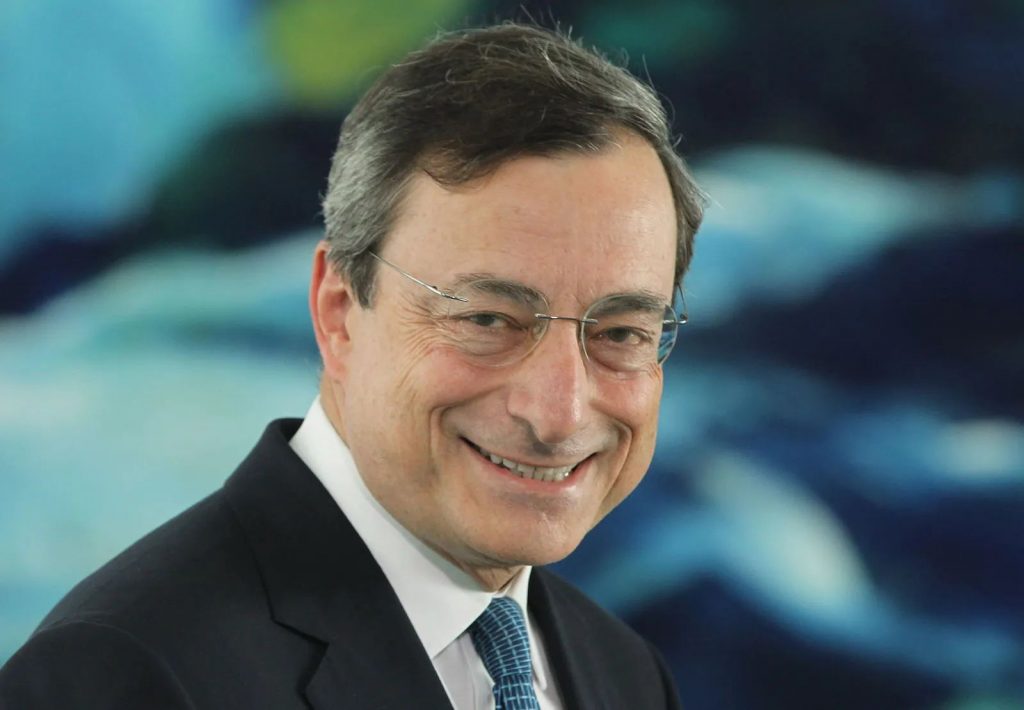Mario Draghi On An Uncertain World: Or a Masterclass in Steering Through Economic & Geopolitical Turmoil
By Rosa Del Cardinale
Publication 11th October 2025 16:23 GMT

Image Credit: Britannica
Mario Draghi on the New Global Economic Order: Navigating Risk, Innovation, and Geopolitics
The world of global finance and geopolitics is entering an era of unprecedented complexity, and few voices carry the authority to illuminate its contours like Mario Draghi. The former President of the European Central Bank and former Prime Minister of Italy recently spoke candidly about the tectonic shifts reshaping international markets, statecraft, and economic strategy. His insights, spanning monetary policy, industrial policy, technological disruption, and geopolitics, offer a masterclass in understanding the forces driving the 21st-century global economy.
From a U.S.-Led World to a Fragmented Global Order
Draghi opens with a sobering observation: the post-Cold War order, dominated for decades by U.S. soft power and a rules-based system of free trade, is fading. In its place emerges a world defined by fluid “blocks” of influence, where unilateral actions in trade, tariffs, and subsidies are likely to become the norm.
“The ascent of China is undeniable,” Draghi notes. “The United States and China will have to go along. But neither has a historical experience of equilibrium consent like the great powers before World War I. We are moving into a riskier world.” This, he emphasizes, does not merely reshape politics—it transforms the global economic landscape, creating new winners and losers.
The Transformational Impact of AI and Technology
One of Draghi’s most striking points is the parallel between AI and the discovery of electricity. Countries and regions that host high-tech ecosystems—primarily the United States and parts of Europe—stand to gain substantially. Conversely, nations with limited technological infrastructure or natural resource endowments, particularly in Africa and much of the developing world, risk falling further behind.
“Productivity growth,” Draghi stresses, “will define fiscal space, inflation dynamics, and the capacity for governments to stabilize economies.” For policymakers, understanding the diffusion rate of technological gains from frontier sectors into the broader economy is now critical—it is the metric that may determine which nations thrive and which falter.
Macro Risks in a Fragmented World
Draghi identifies a spectrum of macroeconomic risks, from inflation and liquidity crises to fiscal sustainability and structural slowdowns in major economies like China. Markets, he notes, price measurable risks but often underestimate structural shifts. The challenge for investors and policymakers alike is navigating uncertainties that are difficult to quantify but have potentially far-reaching consequences.
In the U.S., Draghi points to policies that could be inflationary—tariffs, immigration curbs, and high budget deficits—but notes that robust productivity gains, particularly from high-tech sectors, may offset these pressures. Europe, by contrast, benefits from fiscal rules and an independent European Central Bank (ECB), which mitigate inflation risk but limit discretionary fiscal support in downturns.
Europe’s Strategic Awakening
Reflecting on his 2022 “Draghi Report,” he observes that Europe has historically been slow to act. Yet significant developments have emerged in defense and high-tech sectors. Germany’s constitutional shift to enable substantial defense spending, Italy’s investments in high-tech infrastructure, and the emergence of industrial-scale gigafactories signal a continent slowly gaining momentum.
Still, Draghi cautions, Europe’s progress will only accelerate once regulatory and competition frameworks are streamlined. “The biggest obstacle to scaling up in Europe is our fragmentation—both legal and financial,” he observes. Coordinated state aid and pooled investment capital are essential to enabling projects that can achieve meaningful scale, from energy grids to frontier technologies.
Geopolitics and Trade: The Tightrope of European Strategy
Europe faces the delicate task of balancing strategic dependencies on the U.S. while engaging pragmatically with China. Full decoupling is neither feasible nor desirable; interdependence in trade and technology is a permanent reality. Instead, Europe must navigate sector-specific derisking, protecting critical industries while avoiding measures that could backfire economically.
The Private Market Renaissance
Draghi also addresses the evolution of private markets, highlighting their capacity to provide flexible financing outside traditional banking channels. While acknowledging risks of leverage and potential conflicts of interest, he argues for transparency over heavy-handed regulation: investors must be empowered to assess risk accurately without stifling innovation.
Lessons from Leadership and Crisis Management
Drawing from his experience as Italy’s prime minister during COVID-19 and the Ukraine crisis, Draghi emphasizes the unique satisfaction of roles that produce tangible outcomes. From orchestrating vaccination campaigns to stabilizing the economy after a 9% GDP contraction, he underscores the interplay of decisive policy, fiscal prudence, and effective communication.
Looking Ahead: Productivity, Fiscal Space, and Stability
Draghi concludes with a forward-looking vision: the next decade will hinge on productivity growth, technological integration, and the strategic allocation of fiscal resources. While global fragmentation and geopolitical tension pose risks, the diffusion of innovation and the careful orchestration of fiscal and industrial policy will determine which economies thrive.
“In my world, security and resilience come first, efficiency and profit follow,” he says. The shift in priorities—from purely market-driven efficiency to a balanced emphasis on strength, resilience, and strategic positioning—captures the essence of the new global economic order.
Mario Draghi’s message is clear: the world is transforming faster than many anticipate, and success will depend not just on capital or innovation, but on governance, coordination, and the disciplined cultivation of resilience. For policymakers, investors, and economists, this is both a warning and a roadmap—a call to navigate uncertainty with vision, prudence, and foresight.
